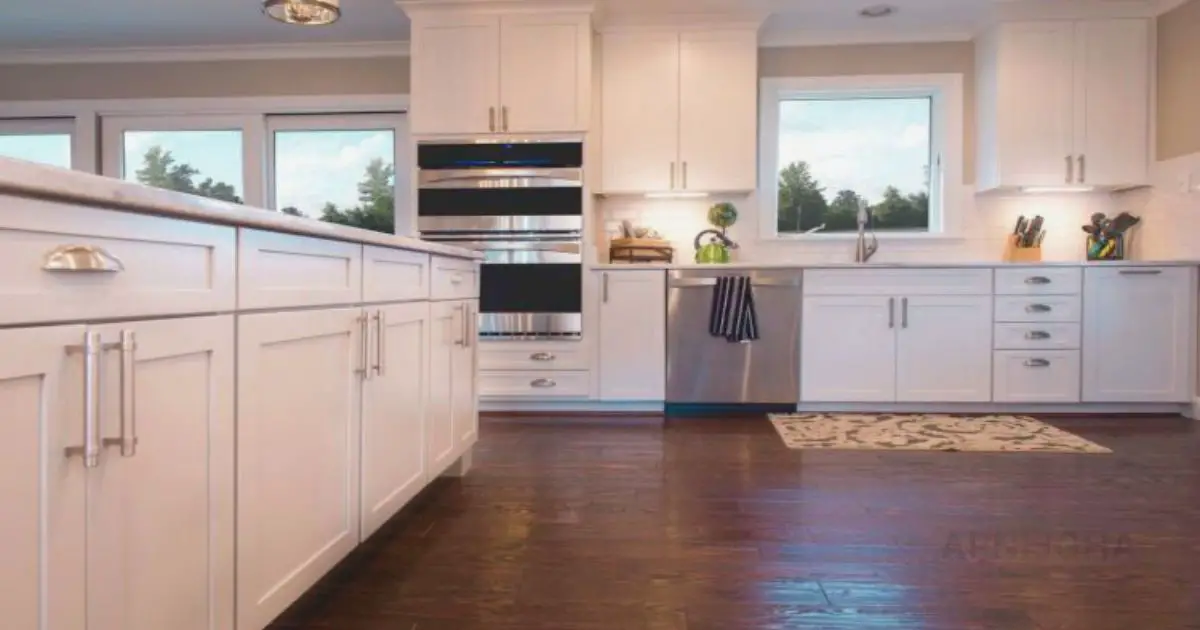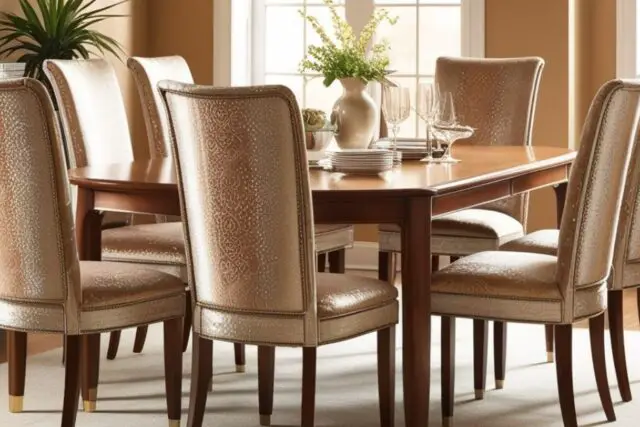
Table of Contents
TogglePros and Cons of Hardwood Flooring in the Kitchen
Introduction
While we are talking about Pros and Cons of Hardwood Flooring in the Kitchen, Hardwood flooring has long been a fave choice for homeowners, in demand for its timeless splendour, herbal warmth, and ability to beautify the cultured attraction of any space.
While traditionally reserved for living rooms and bedrooms, hardwood has an increasing number of uses in kitchens—a room as soon as ruled through tile and linoleum. The kitchen, frequently considered the heart of the home, is an area in which capability and style have to coexist.
As such, deciding on the proper floors is critical. Hardwood flooring in the kitchen offers a unique mixture of beauty and sturdiness. Still, it also comes with its own set of demanding situations.
Understanding the pros and cons of hardwood flooring in the kitchen, high-moisture environment is vital for making an knowledgeable choice that aligns along with your way of life and layout possibilities.
Overview of Hardwood Flooring
Types of Hardwood Flooring: Explain strong wood and engineered timber flooring.
Common Wood Species Used: Oak, maple, cherry, walnut, etc.
Characteristics of Hardwood Flooring: Durability, aesthetics, and natural enchantment.
Choosing the correct flooring to your kitchen is no small feat. With an array of alternatives available, owners regularly find themselves torn between aesthetics and practicality. One famous choice is wooden floors, which has a timeless enchantment and gives a multitude of benefits.
However, like every other alternative, timber flooring comes with its set of execs and cons. In this newsletter, we’ll delve into both that will help you make an knowledgeable choice in your kitchen.

Pros and Cons At a Glance
Pros and cons of hardwood and flooring in the kitchen are just catagorized in a table according to their aspects.
| Aspect | Advantages | Disadvantages |
|---|---|---|
| Aesthetic Qualities | Adds an elegant, warm touch to your kitchen. | – |
| Longevity | High durability with the ability to sand and recoat for extended life. | Initial investment can be high. |
| Resale Value | Boosts the overall value of your home. | – |
| Comfort and Insulation | Offers a comfortable surface and natural insulation. | – |
| Susceptibility to Moisture | – | Prone to water damage, especially in wet kitchen settings. |
| Ongoing Maintenance | Can be well-maintained through sanding and recoating. | Requires regular upkeep to maintain its look. |
Now pros and cons of hardwood and flooring in the kitchen are elaborated seperately and more briefly;
Pros of Wood Floors in Kitchens Elaborated
Aesthetic Appeal
Visual Warmth: Wood flooring brings a warmth and cosiness to any area, kitchens covered.
Elegant: The herbal look of wooden provides an air of class, elevating the overall design.
Resale Value
Investment: Wood floors frequently growth the price of your private home, making it a wise long-term investment.
Market Demand: Homes with wooden flooring tend to promote faster and at better costs.
Durability
Longevity: When nicely-maintained, wood floors can closing for decades.
Strength: High-excellent wood flooring are difficult-sporting and might resist the test of time.
Comfort and Insulation
Soft Underfoot: Compared to tile or concrete, wood is easier for your toes.
Insulation: Wood flooring provide herbal insulation, maintaining your kitchen warm in wintry weather and cool in summer season.
Customisation
Versatile: Wood may be stained or painted to suit your indoors décor.
Multiple Finishes: Options consist of smooth, matte, and everything in between.
Ability to Sand and Recoat
Longevity: Periodic sanding and recoating can refresh the appearance of your wooden floors.
Cost-Effective: This removes the want for overall ground substitute, saving you money in the long run.
Cons of Wood Floors in Kitchens Elaborated
Cost
Initial Expense: Quality wooden flooring may be costly in advance whilst compared to wood impact flooring.
Installation: Professional set up, although recommended, provides to the general price.
Maintenance
Cleaning: Wood flooring require ordinary cleansing to preserve their appearance.
Refinishing: Over time, you may want to refinish the timber to preserve it looking its first-rate.
Susceptibility to Water Damage
Standing Water: Kitchens are at risk of spills and status water can harm wooden floors.
Humidity: High ranges of moisture can cause wood to make bigger and contract, leading to warping.
Potential for Scratches and Dents
Softness: While wooden is comfortable underfoot, it’s vulnerable to dents and scratches.
High Traffic: Kitchens are generally high-visitors areas, which might also boost up put on and tear.
Related Topic: Wall Papers in Pakistan | Types, Availability & Trends
Other Considerations For Kitchen Wood Floors
Type of Wood
Different wood species have beautiful traits. For instance, very well flexible and powerful, even as walnut is darker and more expensive.
Plank Size
The size of the planks can affect the general look. Wide planks can make a small kitchen look more prominent, whilst slender planks can upload a conventional touch.
Installation Methods
Various set up techniques are to be had, which include click structures, floating floors, and glue-down strategies.
Finishing Options
From unfinished to diverse sunglasses and edging styles, the alternatives are abundant.
Choosing The Correct Wood Floors For Your Kitchen
By analysing the Pros and Cons of Hardwood Flooring in the Kitchen we are finally able to choose the better option at some extent lets discuss it deeply
Engineered vs Solid Wood
What are They?
Solid timber is cut from single pieces of wood. In contrast, engineered wood includes a pinnacle layer of actual timber bonded to a couple of layers of plywood or different timber types.
Engineered Wood: The Suitable Choice
The multi-layered construction of engineered wood makes it much less at risk of warping and expansion because of moisture changes, making it perfect for kitchens.
Why Not Solid Wood?
Solid timber can soak up moisture, central to warping and buckling, mainly in a kitchen where spills are commonplace.
Coating Options
Importance of Coating
A suitable coating is essential in a kitchen in which spills and foot traffic are frequent.
Lacquered Finish: The Recommended Choice
A lacquered end sits on the timber surface, supplying a sturdy barrier towards spills and scratches. Additionally, it’s less complicated to clean, a significant benefit in any kitchen.
Conclusion
Pros and Cons of Hardwood Flooring in the Kitchen needs to be focused. The preference in the end boils all the way down to your way of life, possibilities, and price range.
Careful attention of each the professionals and cons will help you’re making an knowledgeable decision which you’ll be satisfied with for years yet to come.
FAQ
What Are the Main Advantages of Having Wooden Flooring inside the Kitchen?
Wooden floors offer numerous blessings inside the kitchen, which include improving the room’s aesthetic appeal and creating a warm, snug atmosphere. Additionally, wooden flooring can boom the resale value of your house and provide natural insulation. They are also pretty durable, particularly if well-maintained through sanding and recoating.
How Does Wood Flooring Impact My Kitchen’s Resale Value?
Wood floors is known to boost the general feel of your home. Homes with wood floors frequently appeal to higher selling expenses and quicker sales as compared to the ones without. Investing in timber flooring is an intelligent lengthy-term investment for your home.
Is it Easy to Maintain Wood Floors inside the Kitchen?
Maintaining timber floors requires regular care, mainly in high-visitors areas like the kitchen. Periodic sanding and recoating can preserve the flooring searching new. However, everyday cleaning and ability refinishing can also be vital over time to maintain its look.
Why is Engineered Wood Recommended Over Solid Wood for Kitchens?
After understanding the Pros and Cons of Hardwood Flooring in the Kitchen we can observe that Engineered timber is commonly a better alternative for kitchens than solid wood. This is because the layered structure of engineered wood makes it less vulnerable to moisture-associated troubles which include warping and growth. Solid wood, then again, tends to take in extra moisture, making it less ideal for kitchen environments.
Which Coating is Best for Wooden Floors within the Kitchen?
For kitchens, a lacquered finish is typically endorsed for timber flooring. This type of coating sits on the floor of the wood, offering a robust barrier in opposition to spills and scratches. It’s also simpler to smooth, which is critical attention for any kitchen.




Leave a Reply